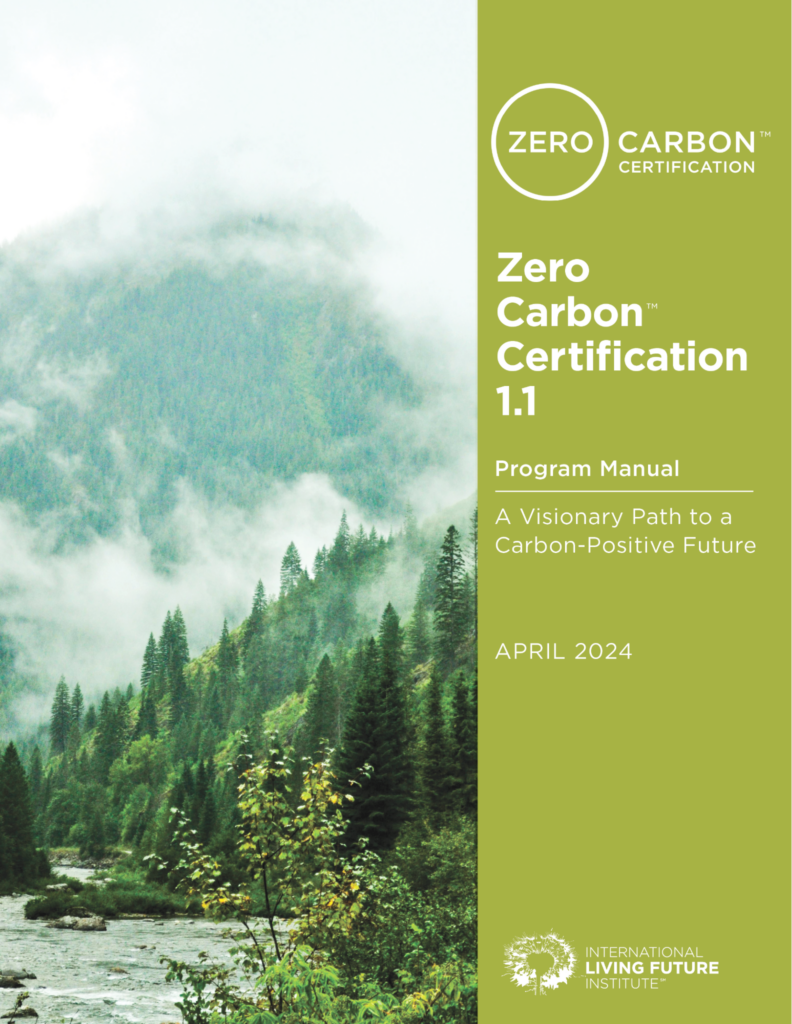

Zero carbon Certification Overview
IMAGINE
We envision a world of climate-positive buildings and products that reverse climate change, helping people and local economies thrive.
Zero Carbon Certification™ was developed by the International Living Future Institute (ILFI or the Institute) in 2018 to directly address the building sector’s role in the global climate crisis. Building construction and operations currently contribute nearly 37% of global greenhouse gas emissions,¹ which are conclusively linked to a rise in global average temperatures and associated threats to the health and prosperity of humans and ecosystems. ILFI developed Zero Carbon Certification to establish a scalable pathway to a climate positive building sector to reverse climate change and ensure global communities thrive.
Zero Carbon Certification is a third-party verified, industry-recognized standard verifying that the operational and embodied carbon emissions of a built project have been neutralized. By achieving the performance targets of Zero Carbon Certification, organizations demonstrate a credible and comprehensive approach to carbon neutrality to enhance the resilience and asset value of a built project.
¹ Global Alliance for Buildings and Construction, 2022 Global Status Report (2022)
JOIN ILFI’S CALL TO ACTION
The scale of change we seek is immense, and unless we are able to articulate the vision and chart a clear path, as a society, we will never experience the type of future that is possible and necessary for our long-term survival. What is required without delay is a complete reshaping of humanity’s relationship with nature and a realignment of our ecological footprint within the planet’s carrying capacity.
Over the last 30 years, green building has grown to become the most important and progressive trend in the building industry. There have been huge steps forward in the design, construction, and operation of buildings, and yet given the rate of change required to avoid the worst effects of climate change and other global environmental challenges, our progress can no longer move at a merely incremental pace but must accelerate radically.
We invite you to join us so that together we can continue to forge ahead on our path toward a Living Future.
The International Living Future Institute issues a challenge:
To all design professionals, contractors, building owners, and investors to radically transform the way we create the built environment and eliminate any negative impact on human and ecosystem health globally.
To all politicians and government officials to remove barriers to systemic change, and to realign incentives to truly protect the health, safety, and welfare of people and all beings.
To all of humanity to reconcile the built environment with the natural environment into a civilization that creates greater biodiversity, resilience, and opportunities for life with each adaptation and development.
INSTEAD OF A WORLD MERELY A LESS BAD VERSION OF THE ONE WE CURRENTLY HAVE, WE ASK A SIMPLE AND PROFOUND QUESTION: WHAT DOES GOOD LOOK LIKE?
INTENT
The intent of the Zero Carbon Certification program is to bring the vision of a fully decarbonized built environment into reality by evaluating, reducing, and offsetting both operational and embodied carbon impacts of buildings. This program fosters the development and use of carbon-free renewable energy resources and neutralizes the impacts of building materials and construction.
REQUIREMENTS
Embodied Carbon
New Building and Building Renovation projects must demonstrate a 20% reduction in the embodied carbon emissions of primary materials and exterior materials compared to a baseline building of equivalent size, function, and energy performance. Building Renovation projects may count the reuse of in-situ primary and exterior materials against the required 20%.
All projects with interior materials in scope must select interior products with a lower than industry average carbon footprint for product categories for which embodied carbon data are readily available.
All projects must set a goal to achieve below the ILFI-approved embodied carbon threshold for the upfront embodied carbon of the project (lifecycle stages A1-A5). See the Program Manual’s section “Embodied Carbon Threshold Clarifications” for more details.
All projects must disclose and offset 100% of the embodied carbon emissions (tCO2e) associated with life cycle stages A1-A5 of primary materials, exterior materials, and interior materials through on-site carbon-sequestering materials and/or by a one-time carbon offset purchase through an ILFI-approved carbon offset provider.
Operational Carbon
All projects must achieve an energy efficiency target over a 12-month period, as compared to a typical existing building with comparable climate, size, use, and occupancy, and combustion must be limited as follows:
- New Building: 20% improvement beyond the energy consumption levels required by ASHRAE Standard 90.1-2019 or later (demonstrating compliance under Appendix G) or IECC 2021 or later
- Building Renovation and Interior: Meet the energy consumption levels required by ASHRAE Standard 90.1-2019 or later (demonstrating compliance under Appendix G) or IECC 2021 or later, OR achieve a 50% reduction of energy use intensity (EUI) from a typical existing building of an equivalent type, size, and location using ILFI-approved tools
- Combustion Limits:
- New Building: Not allowed.
- Building Renovation: Allowed for HVAC systems that are not in project scope. Phase-out plan and renewables offset are required.
- Interior: Allowed for HVAC systems that are not in project scope. Advocacy for a phase-out plan is required.
All projects must provide 100% of the operational energy use associated with the project by new on- or off-site renewable energy.
All projects must meter the energy used by the project.
All projects must have a maintenance plan to monitor and reduce fugitive refrigerant emissions (from sources such as refrigeration, air conditioning, and fire suppression systems). A team member must commit to reducing embodied and operational carbon within the mechanical, electrical, and plumbing (MEP) industry. The team member must establish and sign a company plan to reduce operational and embodied carbon on MEP systems, request low-GWP refrigerants during projects’ design phases, and request Environmental Product Declarations (EPDs) for MEP products. Signatories of the MEP 2040 Commitment comply with this requirement.
INCENTIVE PROGRAMS
Net Zero Energy projects save money. Renewables are increasingly more accessible, and many cities and states offer renewable energy and energy efficiency rebates. Please visit this link for a comprehensive list of resources in the U.S.: Database of State Incentives for Renewables & Efficiency®.

NEXT STEPS
For an overview of the Building Certification Process, please see this resource.
Please see this page for more information on registering your project. For more information or to schedule your one complimentary pre-registration meeting once you’ve reviewed the requirements, please contact sales@living-future.org.
